
views
Call a junk removal service.

Junk removal services offer the easiest solution in terms of effort. Find a local service and schedule a time for them to pick up your car. However, hiring the removal service will likely cost money. Do some research; compare rates between a few options to get the best deal and check company reviews to ensure they have a good reputation. Most sites will have a link to schedule the appointment online, although you can also call the junk removal service and set a time that way. Make sure you get the deal in writing before letting a junk removal company take your car. Include the delivery date of the vehicle, how it’ll be removed, what you’ll pay, and how your junk removal payment will be made.
Recycle your car.
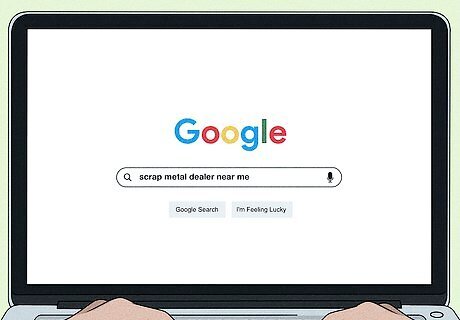
Recycling with a scrap metal dealer is more environmentally friendly. Call up recycling services or get a quote on a few different company websites so you can decide which service to use. Ask the dealer if they pay for used cars—if they can make money off your car, they’ll probably pay you for it, but if they can’t, they may just take it off your hands without throwing in any cash. If you decide to recycle your car with a scrap metal dealer, accept an offer and set up a date and time to collect the car. Do a quick online search to see if there’s a scrap metal dealer near you. If not, you might have to go out of your way to get the car recycled (or dispose of it in a different way).
Sell the car for parts
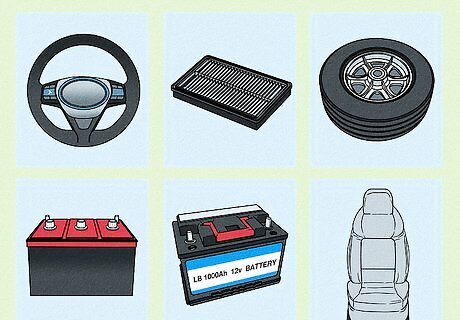
If parts of your car still work, you can make money by selling them. Hire an experienced mechanic to locate and salvage any parts that have value. Clean off each part and determine how much money you can make from them; then, set a fair price and sell them over popular sites like eBay Motors and Craigslist. Arrange the delivery of all sold car parts, and enjoy your profits. If you have the same level of knowledge as a mechanic, you can part out the car yourself. However, the majority of car owners will probably need help with this. There’s no standard price for individual used car parts, so compare prices online to ensure you set a fair price for your own car parts. Figure out the cost of shipping and which payment method you’ll use. Apps like PayPal and Venmo can collect the money, though they sometimes charge a small fee. Be ready to communicate with potential buyers and answer their questions since most people want a clear idea of the part’s condition before purchase.
Sell the car to a dealership.

Dealerships can lower the price of a new car if you trade in your old one. Get the car appraised at a dealership and have them determine its trade-in value. Find out what the dealership will offer you for the car and whether they’ll buy it outright or only accept a trade-in. Finally, negotiate with the dealer once they make an offer to ensure you get the best bargain possible. Look up your car’s market value with Kelley Blue Book or Edmunds. Use your market research value to guide your bargaining (but understand that your car is worth less than the current market value because of its condition). If you buying or selling a car, check their reputation through online reviews, or ask friends if they have ever dealt with the dealership.
Sell your car to a scrapyard.
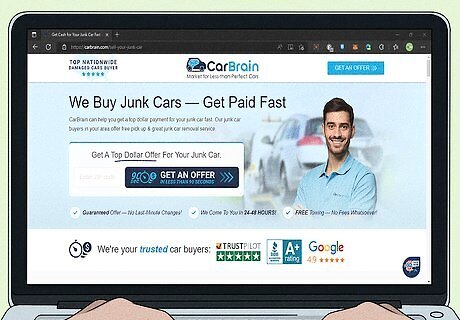
Scrapyards are an easy alternative to negotiating with dealerships. Call local scrapyards to see what they’ll offer for your car. Do online research into your options beforehand and call several businesses (or get a quote from their website, if they have one) to ensure you’re getting the best bargain. Then, accept an offer and set up a date and time for the scrapyard to collect your car. Most dealerships send cars that don’t work to a scrapyard to be sold off for parts anyway, so you’ll likely make some good money if you do it yourself.
Sell the car independently
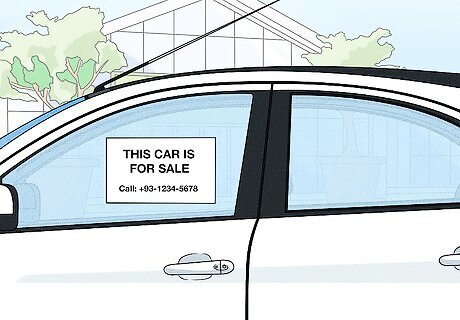
Selling independently ensures you get your money’s worth for the car. You’ll need to do three things to sell your car independently. First, you’ll need to set a price that’s based on market research. Then, you’ll have to pull together your paperwork, which can vary state by state. And finally, you’ll have to negotiate and sell your car to an interested party. Use Edmunds or Kelley Blue Book to find the car’s value, and Carfax or AutoCheck to get a history report. Factor any damage to the car into your pricing decision and set the asking price slightly above the car’s actual value, so you have negotiating room. Make sure to call or check your state’s DMV website and find out what additional paperwork is needed to transfer ownership of the car, including but not limited to a bill of sale. Popular car-selling platforms include eBay Motors, Autotrader, Craigslist, and Facebook Marketplace. Be honest with buyers about the state of your car to avoid issues later on. Set a bottom line so you don’t end up with a lower price than you want—and ensure the buyer can pay cash or with a cashier’s check.
Renovate your car to sell.
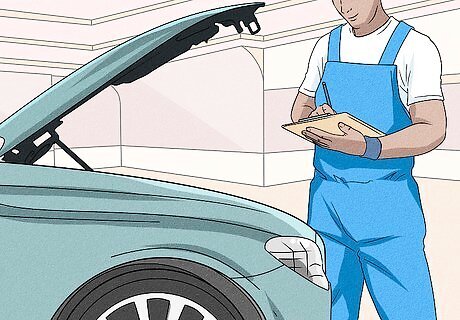
Repairs will cost money, but you can profit more from a fixed-up car. Bring it to your mechanic and have the car renovated to run again; if the car has been in a heavy state of disrepair for a long time, be aware that this can raise repair costs. Nonetheless, lots of people look for used (and even vintage) cars to buy, so once renovated, you can sell your car independently and recoup the cost of repairs. Outside of renovations, be sure to clean the car thoroughly before selling it. If you can’t decide whether to renovate or trade in, find out how much the repairs would cost. If repairs cost less than the amount deducted for damage during a trade-in, opt to have your car repaired instead.
Auction off the car.

Auctioning a car is easy since the auction house manages the sale. Find an auction house in your area and make arrangements to bring the car in. The auction house technicians can inspect and put a price on the car, then photograph it and assign a lot and number for the auction. After that, simply let the auction proceed and collect the money from the car sale. If you don’t want to lose money on the car, set a reserve price (or the price below which you won’t sell your car). If you want the car gone, enter it into the auction without a reserve. Even if you have an interested buyer who is offering a price below your reserve price, the auctioneer can help the two of you to reach an agreement; otherwise, you can keep the car at the auction house for a fee.
Donate the car to charity

Donation lets you get rid of your car and give back to the community! Search online for charities that accept non-running cars. Select a charity and sign up online to have your car picked up, or call the charity directly to make an appointment. The charity will come and collect your car, after which they’ll likely refurbish and sell it to someone in need at a reduced price. Make sure the charity is eligible to receive tax-deductible contributions. A few popular examples include Wheels for Wishes (benefitting the Make-a-Wish foundation), Kars4Kids, Habitat for Humanity, and Goodwill Car Donations. Before donating, use Kelley Blue Book or Edmunds to find your car’s market value. When it comes time to file taxes, it’s your job to know the car’s value—not the charity’s. Once the car has been collected by the charity, make sure they send you a written acknowledgment that you can use to claim a tax deduction. File your taxes by claiming a deduction up to $500 on Form 1040EZ (if your car is worth less than $500) or by itemizing the return and deducting the full selling price of your car (if the car is worth more than $500).




















Comments
0 comment